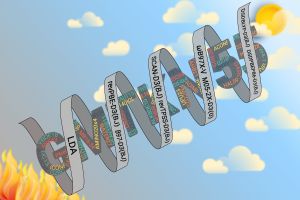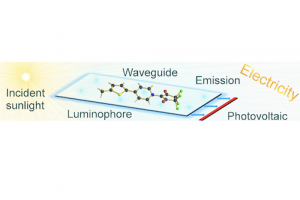Our experimental-computational collaboration on “Structure–reactivity correlations of the abnormal Beckmann reaction of dihydrolevoglucosenone oxime” was recently published in Organic & Biomolecular Chemistry. This study was carried out together with the White and Williams groups at the School of Chemistry, under the leadership of the latter. Once again, it could be shown how the combination between experiment and theory can provide a more complete picture of a given chemical problem.
The full article can be found here.
We are proud to announce publication of our new GMTKN55 database for general main-group thermochemistry, kinetics and non-covalent interations, which we used to assess nearly 220 dispersion-corrected and -uncorrected Density Functional Theory (DFT) approximations.
DFT — a methodology that has been acknowledged with the Nobel Prize in Chemistry in 1998 — has become the most important tool for chemists to study chemical systems computationally. While being used by thousands worldwide on an every-day basis, it also has its disadvantages, for instance, hundreds of variations of DFT exist that all differ in reliability, which therefore leads to confusion within the user community.
A recent study by us — in collaboration with the Grimme group in Germany — provides guidelines to navigate through this plethora of methods. We present a large database to assess a method’s accuracy, which we used in one the largest DFT assessment studies to provide clear guidelines to the method user and to eliminate popular misconceptions in this area. Our recommendations are the result of a project that lasted nearly three years and required about 2 million CPU hours on high-performance computing clusters.
We hope that the reported findings will influence the way chemists carry out computational DFT studies in the future and that GMTKN55 will be adopted as a new standard for the assessment and development of electronic-structure methods.
Our article was published in Physical Chemistry Chemical Physics, and can be found here.
The GMTKN55 database itself can be accessed here.

Welcome to Marcos Casanova Páez who joins us as a new PhD student from the University of Chile.
Welcome to Ms Nisha Mehta who joins our group as a PhD student as part of the Melbourne-India Postgraduate Program between The University of Melbourne and the Indian Institute of Technology Kanpur.
The results of our collaboration with Tobias Schwabe from the University of Hamburg, Germany, have been published. We present improved versions of time-dependent double-hybrid density functionals for the calculation of electronic excitation energies. These methods belong to the best time-dependent density functional theory methods and can compete with more resource-demanding wave-function theories. For more details see: Schwabe, L. Goerigk, “Time-dependent double-hybrid density functionals with spin-component and spin-opposite scaling“, Journal of Chemical Theory and Computation 2017, DOI: 10.1021/acs.jctc.7b00386
In our transition towards a more carbon neutral environment, the development of aesthetically acceptable building materials capable of passively collecting solar energy is highly desirable. One strategy to achieve this goal is the harvesting of light from transparent surfaces, such as windows, by incorporation of highly efficient luminophores with absorption bands in the UV or IR region of the solar spectrum. Such light harvesting devices are known as luminescent solar concentrators. The principle of device operation involves the absorption of light by the luminophore whose emitted light is trapped in the waveguiding matrix and concentrated to the edges of the device. The concentrated light can then be efficiently converted to electric current by high-performance solar cells.
As part of our ongoing collaborations with experimental colleagues from The University of Melbourne, our highly accurate wave-function calculations helped to identify unusually fluorescent pyridinium enolates as ideal light harvesting chromophores for use in fully transparent luminescent solar concentrators. Full details of this collaborative research can be found in (Xu, J.; Zhang, B.; Jansen, M.; Goerigk, L.; Wong, W. W. H.; Ritchie, C.*, Angew. Chem. Int. Ed.., 2017, 10.1002/anie.201704832).

Our new book chapter on the popular DFT-D3 dispersion correction is out. It forms part of an exciting new book on “Non-covalent interactions in quantum chemistry and physics”. (link to book).
Our recent collaboration with the Ritchie group published in Angewandte Chemie, was also featured in the May issue of Chemistry Australia, the monthly magazine by the Royal Australian Chemical Institute (on page 16, “Six of one, ten of another”).
http://chemaust.raci.org.au/sites/default/files/pdf/2017/CiA_May%202017.pdf
The School of Chemistry has awarded Domi Wappett the JS Anderson Prize, which is given to the student majoring in Chemistry who displays the greatest aptitude and potential for research.
Congratulations, Domi. Well done!
The Royal Australian Chemical Institute (RACI) awarded Dr Lars Goerigk the 2017 RACI Physical Chemistry Division Lectureship.
With this lectureship the Physical Chemistry Division of RACI allows outstanding early- and mid-career physical or theoretical chemists to tour Australia to present their research work. The lectureship will be officially awarded at the upcoming RACI Centenary Congress in Melbourne in July.

